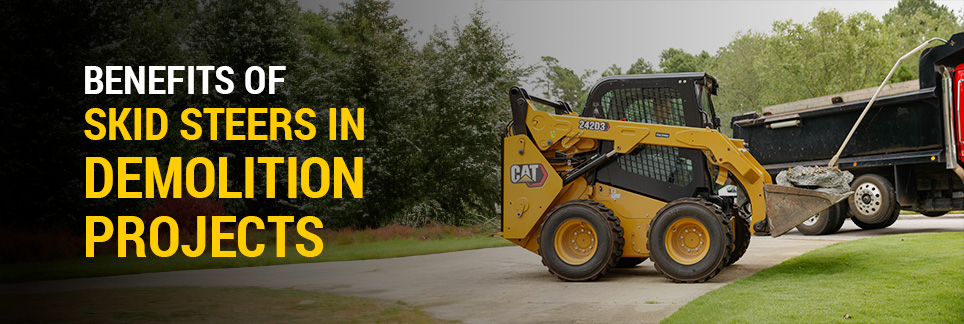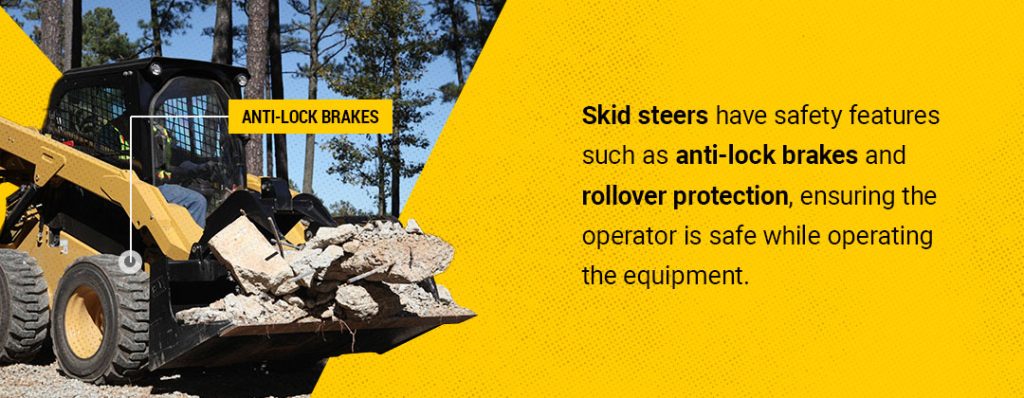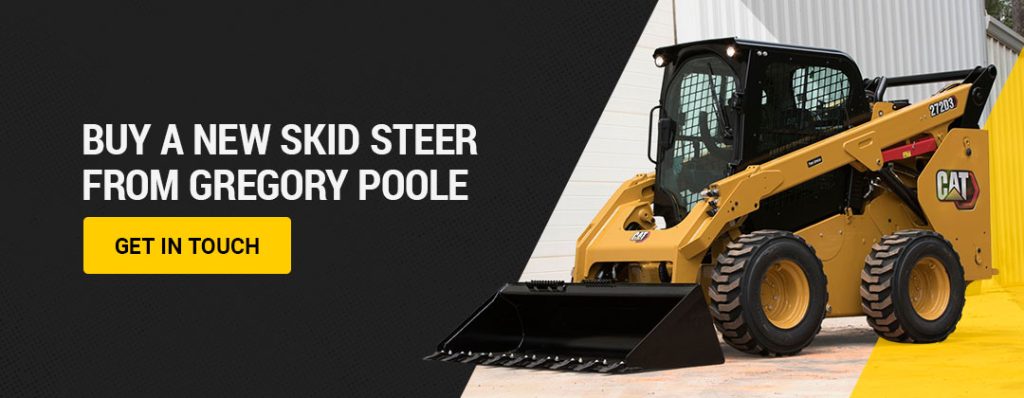
Skid steers are essential equipment in the construction industry. Demolition contractors and project managers prefer skid steers because they are versatile machines perfect for both exterior and internal demolition projects. Let’s explore the benefits of skid steers that make them a good choice for demolition projects.
Along with track loaders and excavators, skid steers are another versatile option for demolition projects. They do a great job of breaking up concrete or asphalt, in addition to moving demolition debris and other materials. Using a skid steer also comes with various attachment options for moving materials, breaking ground or picking up large objects.
Skid steers are generally smaller than excavators or similar machinery, but they can also be classified into two categories based on their sizes — small and large. While smaller skid steers are mostly used for interior demolitions, larger ones are preferred for large-scale exterior demolition projects. Compared to larger machines, skid steers are ideal for working in smaller indoor and outdoor spaces.
A skid steer is compatible with a wide array of attachments, but its primary attachment is the bucket. The bucket lifts and moves heavy materials to clear areas of debris, which is especially useful during demolition projects. Operators can also swap the bucket for a ripper attachment or grapple bucket.
Skid steers have established themselves as some of the most versatile and powerful machinery in the construction industry. The following advantages of skid steers make them a popular choice for demolition projects.
Skid steers are incredibly flexible and versatile. They can easily handle various types of construction tasks, including demolitions. This machinery is designed to maneuver in uneven terrain and tight spaces, making it the ideal choice for projects that require agility and mobility. They are the go-to equipment for projects where traditional construction equipment cannot operate.
The versatility of this equipment also allows you to save time. Demolition contractors, project managers and other construction professionals do not have to use multiple pieces of equipment for tasks that can be handled by a skid steer.
Skid steers are smaller and lighter than truck loaders, large excavators or similar machinery. Their size makes them easy to transport to sites. They are compact, and their ability to rotate on their own axis ensures precision when removing debris or distributing materials. Smaller equipment means it can be used in tight corners where larger machinery is unsuitable.
Skid steers are used with various attachments to perform different tasks. Skid steers are compatible with backhoes, augers, trenches, pallet forks, brooms, grapples, slashers, buckets and many other attachments. However, only specific attachments are required when using skid steers for demolition projects.
Skid steers are easier to operate compared to larger and heavier machinery. The equipment is designed with ergonomic controls and intuitive operation, and operators require less training to use the equipment effectively. It’s also easy to get in and out of the equipment because of the open front entry.
Although small in size, skid steers have a high hydraulic flow rate. Hydraulic machinery attachments can be used to increase the equipment’s efficiency.

Skid steers have safety features such as anti-lock brakes and rollover protection, ensuring the operator is safe while operating the equipment. In addition, equipment operators have good visibility of the site and can control the machine from a secure and protected area. Compared to manual labor during demolition projects, skid steers can significantly reduce the risks of accidents and injuries.
Due to their small size, skid steers consume less fuel, making them more cost-effective than bigger machines. In addition, the fewer moving parts can reduce maintenance costs and downtime.
The versatility of these machines also makes them the more economical choice when handling demolition projects. Because they are compatible with multiple attachments that can be used during the project, you won’t need other machinery. This can save you money on equipment rental, equipment transportation costs or purchase costs. The increased efficiency of the machinery can also reduce labor costs.
Skid steers consume less fuel and emit fewer emissions than larger machinery, making them the more environmentally friendly choice for demolition tasks. In addition, they have lower noise levels, making them ideal for urban settings.
Skid steers have a smaller footprint at the job site than larger machinery. They are outfitted with wheels or tracks that minimize soil compression.
Skid steers are encased in sturdy cabins, giving operators excellent protection. These machines are also built to endure tough ground and weather conditions. Using a skid steer will ensure consistent progress in your projects regardless of the environment. In addition, they have better ground clearance, which is helpful when you’re going over obstacles or working on rough terrain.
We hope the benefits highlighted have convinced you why you should buy a skid steer. While considering the investment, you should choose the right equipment for demolition tasks. Demolition environments can be harsh on machinery, and you should consider some factors before choosing the right equipment for the task. In addition, there are several considerations to note when using the equipment for demolition tasks.

Skid steers are useful for demolition projects. Their versatility and compatibility with multiple attachments eliminate the need to use several machines, making them a cost-effective option. This equipment is also efficient, easy to operate and has safety features. Gregory Poole has over 70 years of expertise in the heavy equipment industry and we have a wide selection of compact skid steers that will make an excellent addition to your operations. Please get in touch with us for more information.